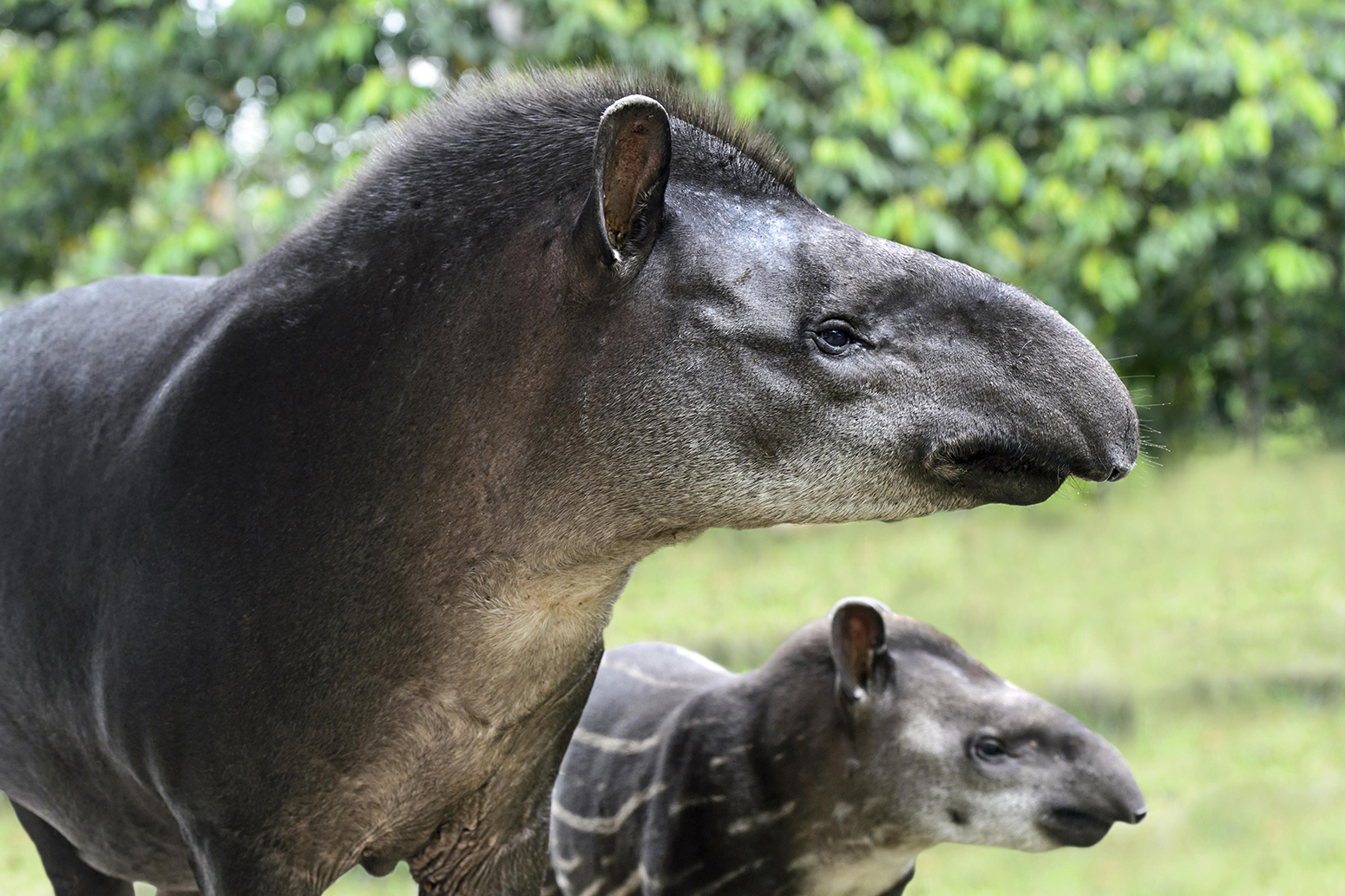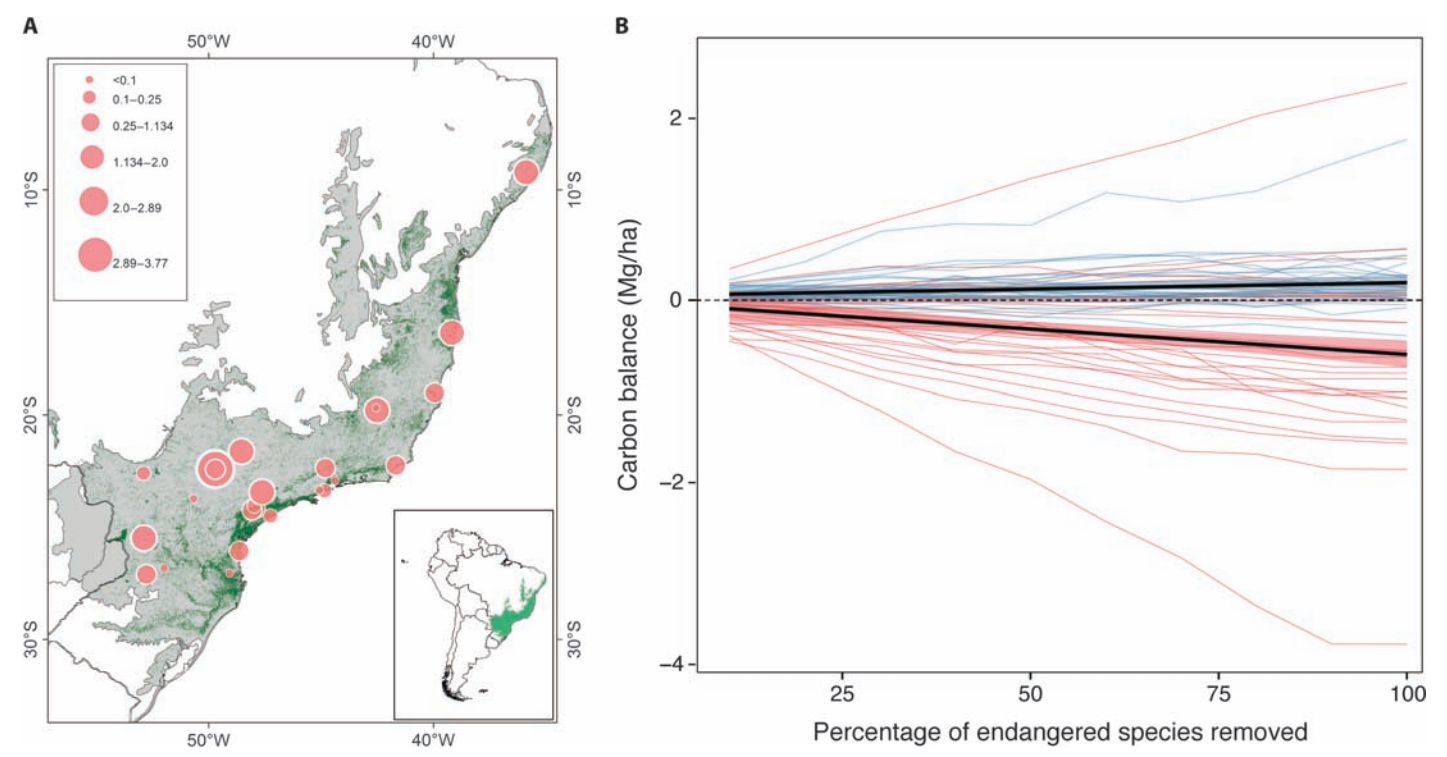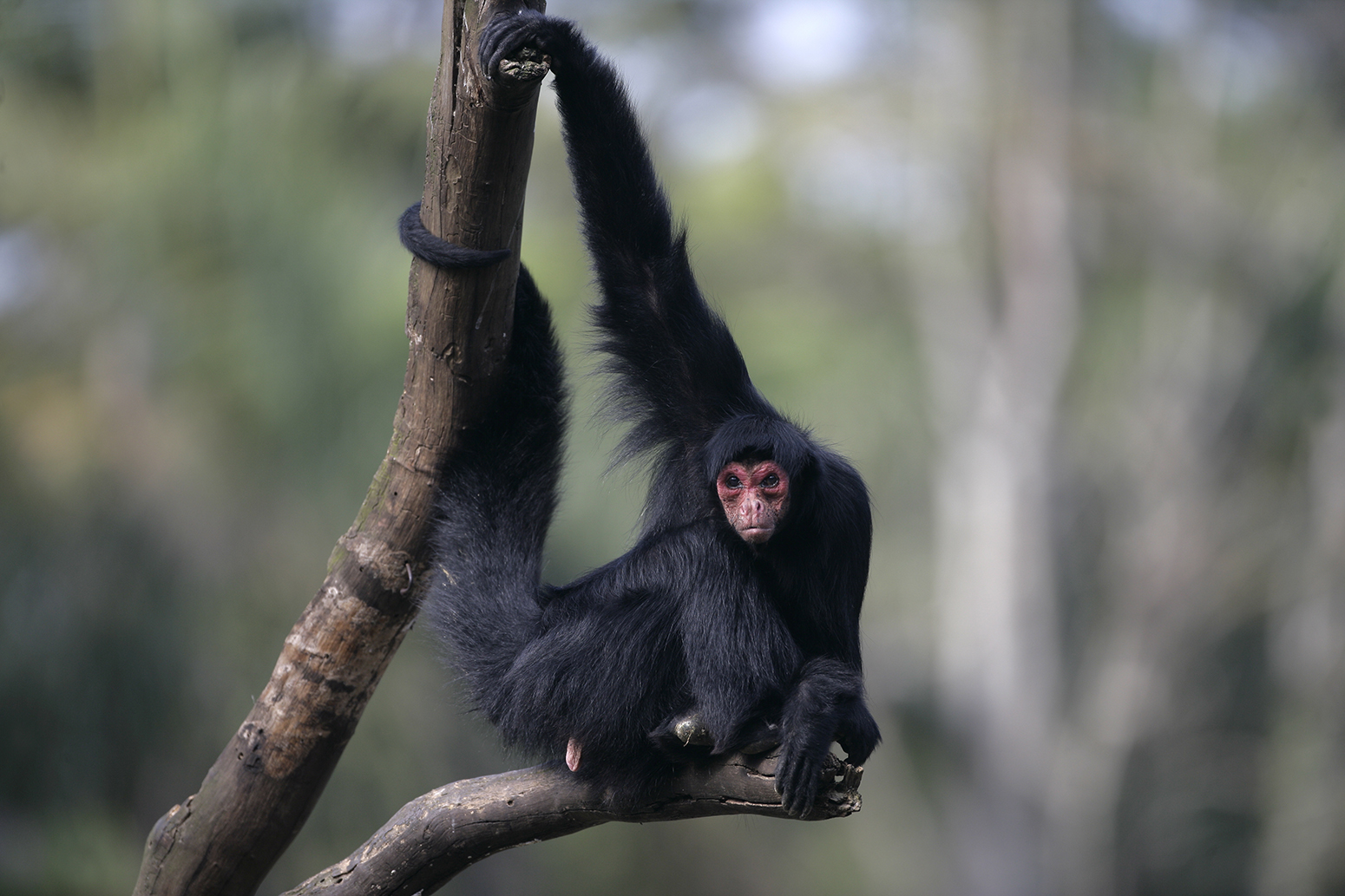
Poaching could reduce carbon storage of tropical forests, study says
Robert McSweeney
12.18.15Robert McSweeney
18.12.2015 | 7:00pmThe hunting of large mammals and birds, such as monkeys, tapirs and toucans, in tropical forests could have unintended consequences for climate change, a new study suggests.
These animals provide a crucial role in the reproduction of trees, the researchers say, and their loss could have a knock-on impact on how effectively forests can absorb and store carbon dioxide.
‘Silent threat’
Every year, millions of animals disappear from tropical forests around the world through hunting, illegal trade and habitat loss. This doesn’t just deprive the forests of some of their most captivating residents, says a new study in Science Advances, but removes an invaluable service they provide to large trees.
One of the main ways that plants and trees distribute their seeds is when their fruit is eaten by animals and “deposited” elsewhere in the forest. Large hardwood trees, perhaps unsurprisingly, tend to have large seeds – thus their seed dispersal relies on bigger animals that are able to eat them.
The theory goes that with fewer animals, those seeds aren’t dispersed as widely, says co-author Prof Mauro Galetti, a professor in the department of ecology at São Paulo State University. He tells Carbon Brief:
If we remove large fruit-eating mammals from the forest, we will lose a key ecosystem service from tropical forests.
If the seeds of large trees aren’t well-dispersed, their reproduction is put in jeopardy, Galetti says. When trees die or fall foul of logging, storms or fire, they are then less likely to be replaced by another generation.
Large hardwood trees tend to store more carbon compared to their softwood cousins, the researchers say. So, the loss of these trees will gradually erode the amount of carbon dioxide forests can absorb from the atmosphere and lock up as carbon in their trunks and branches.
The researchers illustrate this “silent threat” with the graphic below. Note: “defaunated” is a term for removing animals from the forest.

Infographic of how removal of animals (“defaunation”) affects carbon stocks in tropical forests. Credit: M. Galetti.
Large mammals
To test their theory, the researchers first collected data on more than 2,000 tree species and 800 animals types from 31 sites across the Atlantic Forest in South America (see map below).
The Atlantic Forest covers much of southern Brazil and just creeps across the border into northern Argentina and southeastern Paraguay. It reaches inland from the Atlantic coast – some 200km in the very south of Brazil, but only a fragmented 40km at its northern extent.
The forest is home to large mammals, such as muriqui (spider monkey), toucan, guan, curassow and tapir, which are all threatened by extinction due to hunting, says Galetti. Eighty-nine percent of the forest’s woody plant species rely on these animals to disperse their seeds.

10 Feb 2015, Yasuni National Park, Ecuador. South American tapir (Tapirus terrestris), female with young, tapir family (Tapiridae), Amazon rainforest, Yasuni National Park, Ecuador, South America. © Guenter Fischer/imageBROKER/Corbis.
The researchers ran model simulations of how the forest might change when large mammals were gradually removed – from a 10% reduction all the way up to 100%.
You can see the results in the right-hand figure below. The red lines are simulations where large animals are taken out of the forest, while the blue lines show simulations of random changes. As a greater percentage of species are lost from the forest (x-axis), its carbon storage tends to decrease (y-axis). The thick black lines show the average changes from all the different scenarios.

Simulated reduction in carbon storage from Atlantic Forest as large mammal species removed. Left: location of 31 sites studied, where size of circle shows magnitude of carbon loss. Right: Change in carbon storage with species removal (from initial value of zero), where red lines are species removed and blue lines are random changes to animal numbers. All figures in tonnes per hectare. Source: Bello et al. (2015).
This is a cause for concern, says Prof Georgina Mace, director of the UCL Centre for Biodiversity and Environment Research – one of a number of other scientists who commented on the study for Carbon Brief. She says:
These larger trees are disproportionately important for carbon storage so any accelerated loss of numbers or distribution due to reproductive failures could have important consequences in tropical forests.
Jigsaw puzzle
Removing nature’s seed spreaders could limit the ability of forests to suck up our excess carbon emissions and help moderate global temperature rise, says Prof Mark Urban, an associate professor in the department of ecology and evolutionary biology at the University of Connecticut.
Urban was the author of a paper earlier this year on how climate change threatens one in six species with extinction. He tells Carbon Brief:
This study reminds us that ecosystems are made up of a complex web of species interactions. Messing with ecosystem connections can have profound implications for the services that they provide to humans, including cleaning up after our carbon mess.
Sustaining ecosystems services require us not to just save the obvious pieces, such as trees in this case, but the whole set of interacting parts. The study reminds us of the golden rule of solving jigsaw puzzles – don’t lose any of the pieces.
The findings of the study may apply elsewhere in South America, but perhaps not in all tropical forests, says Dr Philip Wheeler, an ecologist and conservation biologist at the Open University:
[The findings] are probably less relevant to other major tropical forest regions, such as South East Asia, where forests are dominated by tree species which are not animal-dispersed.
‘What-if’ experiment
The study highlights what could be one of many unintended consequences of climate change, says Prof Joshua Lawler, an associate professor in the school of forest resources at the University of Washington. He tells Carbon Brief:
[P]erhaps most importantly, it highlights a potential positive feedback loop – meaning the scenario they highlight would amplify changes in the climate.
However, it’s important to remember that is a “what-if” scenario, Lawler points out:
Although it is likely that the seed disperser community in the Atlantic Forest will change, it may very well be that new seed dispersing species will move in to replace the old, or even that the species that remain will be released from competition and increase in abundance, possibly offsetting the loss.
Seeing exactly how forests respond to reductions in large mammals will require more experiments in the future and long-term observations, adds Urban.
Main image: Toucan, ca. 2000, Iguazu National Park, Argentina, Brazil. © Kevin Schafer/Corbis.
Bello, C., Galetti, M. et al. (2015) Defaunation affects carbon storage in tropical forests, Science Advances, doi:e1501105.


